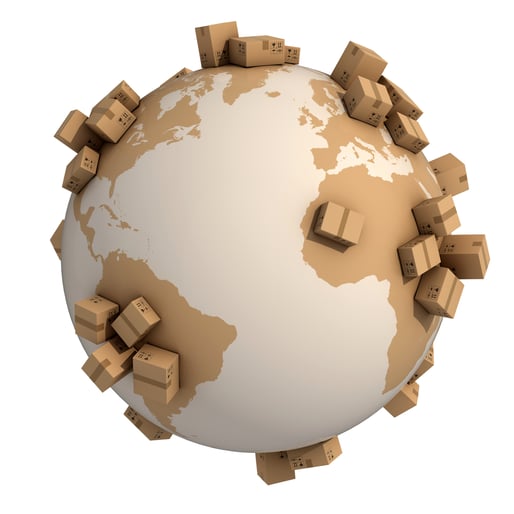
Remember the days when ecommerce was just starting out and online shopping was viewed as the green option? Rather than idling on gridlocked roads belching exhaust fumes en route to the mall, consumers could complete a few mouse clicks from the comfort of their desk chairs and merchandise would magically appear at their doorstep.
Those promises of convenience have largely played out; the environmental benefits are a murkier picture, however. Look no further than curbside on recycling day for evidence of this new shopping model. Increasingly, instead of 30 widgets packed in one box going to retailers, 30 separate boxes are going directly to consumers – even when consumers place orders for multiple items. Does the carbon footprint of added cardboard and bubble wrap outweigh the reduced auto emissions? The answer isn’t as tidy as initially thought.
A new SRM white paper explores the implications of these and other changes in the pulp and paper industry for companies reliant on packaging materials for its operations; in other words, anyone engaged in the manufacture of goods. Let’s consider some of the high points.
Prime Reasons for Pulp and Paper Shortages
Federal Reserve data confirms what we already know: consumers are turning to remote shopping in growing numbers. Brick and mortar still commands a better than 80 percent share of retail activity, however, which means online retailers have a large remaining market to pursue and will need ever more packaging to fulfill those orders.
Payments data also shows that consumers have been unbundling their orders, a natural result of the free shipping perks of programs like Amazon Prime and the race by competitors to follow suit. Combined with retailers’ trend toward shipping product a la carte – to optimize customer experience through fast delivery as well as to simplify warehousing strategy – the demand for boxes is bound to increase.
Layer on top of these factors a booming economy and growing global middle class, and it’s easy to see why demand for corrugate is on the rise. At the same time, the pulp and paper industry endured a lengthy period of retrenchment following the Great Recession, with multiple production plants being de-commissioned and the field of national players consolidating from 15 to five since 1999.
As a result, U.S. paper mills are currently operating at 97-98 percent of capacity and the market price for containerboard has risen markedly since late 2016. Further complicating things, bringing new plants online is a multi-year process. For stateside manufacturers, this means that after an extended period of price stability, negotiating leverage has shifted in favor of suppliers for the foreseeable future.
Ensuring Supply, Controlling Cost
The Bottom Line: For manufacturing decision-makers, unless you’ve been in a purchasing role for well over a decade, these factors present an operating landscape production managers have never encountered. Firms face the twin challenges of controlling cost while ensuring a steady supply of packaging material. Imagine the turmoil if orders are plentiful and the production line humming along, yet customer demand is left unsatisfied (and revenue lost) for lack of boxes in which to ship product. This is particularly vexing when the goods in question are perishable. With priority given to 800 pound gorillas like Amazon in a tight market, smaller players without solid supplier relationships could find themselves in this, um, box.
On the other hand, contract language and formula-driven price escalators that drew little notice over the past 10 years may lead to nasty unintended consequences in today’s environment. It’s essential to have an expert well versed in these arcane matters – a skill set difficult to find in all but the largest procurement shops – review pending contracts.
SRM’s white paper addresses these and other related topics in greater detail. I hope you’ll take the time to read it, as it could spare your firm from much pain and expense down the road.




